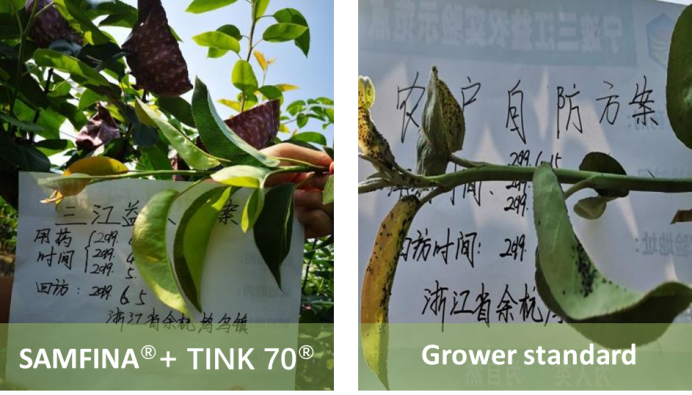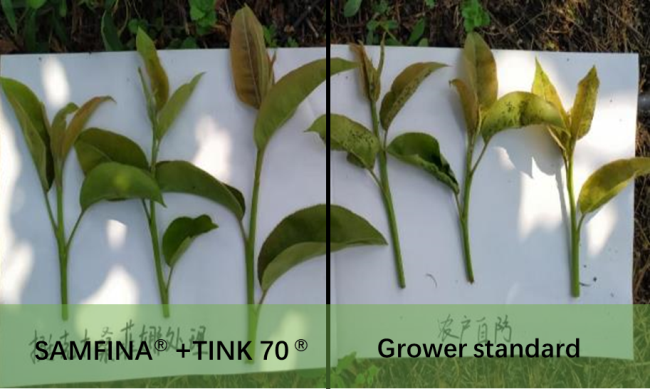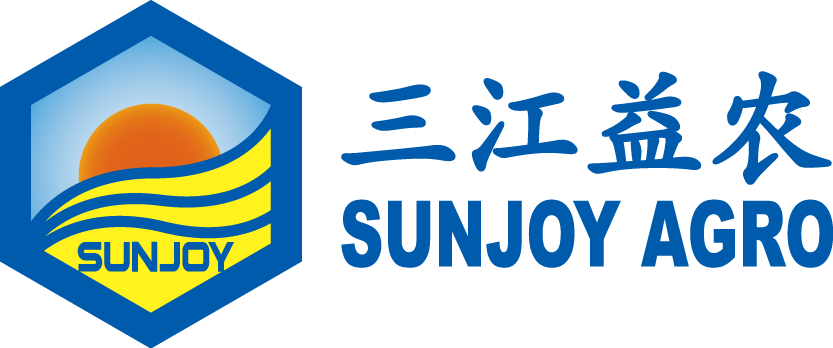Case Studies
We provide plant protection and plant nutrition products that help build healthy and sustainable food systems.
Control Pear Aphids by SAMFINA
Aphids are small, soft-bodied insects that feed on plant sap, weakening plants, causing discolored and withered leaves, harming crops, flowers and fruits.
Insecticide
Background
Aphids are small, soft-bodied insects feed by sucking the nutrient-rich liquids out of plants. In large numbers, they can weaken plants significantly, resulting in discolored and withered leaves, harming crops, flowers and fruits. The sap-sucking insects excrete honeydew and secretions that induces sooty mold. The mold does not infect plants but covers leaves to block light and makes photosynthesis less efficient. Moreover, aphids can be vector of viruses. Plant viruses are easily transmitted among sucking and piercing wounds. Aphids can reproduce throughout the year with or without mating. They multiply in numbers rapidly with such efficient reproduction strategy. Thus, it is important to control before population outbreak.
Recommendation
SAMFINA (50% Spirotetramat SC) is an insecticide that controls sucking insects, including aphids, scale insects, thrips, whiteflies, and mites. Spirotetramat works by inhibiting lipid biosynthesis. It can inhibit the growth of younger insects, reduce their ability to reproduce, and eventually lead to death. Unlike conventional systemic insecticides, Spirotetramat can be transported in the phloem and xylem. After the foliar application, the two-way systemic insecticide ensures the active ingredient reaches the unsprayed leaves and roots to control hidden sucking pests and protect new shoots.
Performance Results
- Test purpose
The purpose of this study is to verify the control effect of SAMFINA (50% spirotetramat SC) and TINK 70 (70% acetamiprid WG) on aphids.
- Insecticide and Experiment
|
No. |
Insecticide |
Dilution factor |
|
A |
SAMFINA+TINK 70 |
6000+3000 |
|
B |
Grower’s treatment |
N/A |
- Results
Sunjoy Agro’s technical team has done some field trials about SAMFINA against aphids feeding on the leaves of fruit trees. The test field is located in Yuhang city, Zhejiang province. Researchers applied the insecticides three times on 15/04/2019, 26/04/2019, and 03/05/2019 in the initial stage of aphid breakout. Control effectiveness was tested on 06/05/2019. Researchers chose 15 branches randomly and checked the number of living aphids from the top ten pieces of leaves. We make rough estimates due to the high number of aphids in growers' standard treatment.
|
Aphids Control Results |
||
|
|
Number of Aphids in Group A |
Number of Aphids in Group B |
|
Branch1 |
2 |
>500 |
|
Branch 2 |
4 |
>200 |
|
Branch 3 |
3 |
>100 |
|
Branch 4 |
0 |
>500 |
|
Branch 5 |
8 |
>200 |
|
Branch 6 |
6 |
>100 |
|
Branch 7 |
10 |
>500 |
|
Branch 8 |
6 |
>200 |
|
Branch 9 |
0 |
>300 |
|
Branch 10 |
5 |
>250 |
|
Branch 11 |
8 |
>200 |
|
Branch 12 |
1 |
>200 |
|
Branch 13 |
7 |
>500 |
|
Branch 14 |
8 |
>200 |
|
Branch 15 |
7 |
>100 |
- Conclusion
Under the conditions of this experiment, SAMFINA is safe for the tested pear varieties. The control effectiveness of Group A, 50% Spirotetramat SC and 70% Acetamiprid WG have the stronger effects against aphids. The young leaves were rarely damaged. In contrast, Group B or the grower’s common treatment did not efffectively reduce the population of aphids. A large number of aphids sucked on fresh leaves, causing the leaves to twist, resulting in low photosynthetic efficiency.


Previous
Explore More

